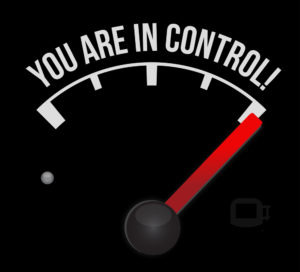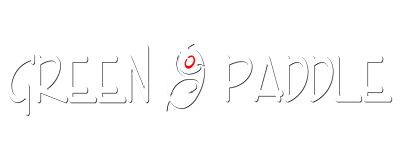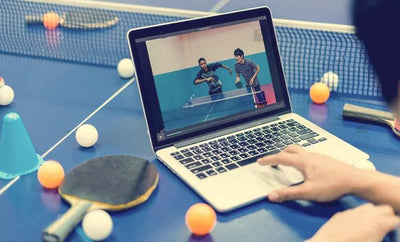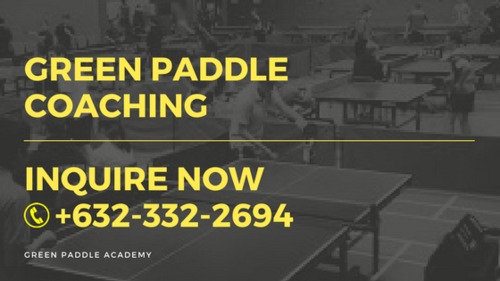
Get Ahead Of Your Opponent Through Your Service
Bet at first you thought that serving the ball in table tennis is only for the sole purpose of transporting it to the opponent’s side so you can finally start the rally. Well, it is not entirely wrong you know, it is indeed the starting point of a rally. But let us not limit it to that because there are other advantages when the ball is in your possession and you are the one serving.
How can you use it to your advantage?
As a general rule, you get to serve twice before it becomes the opponent’s turn. The switching continues until either of you reaches 11 points and wins the game. However, this becomes different if the score reaches 10-10, as from this point, each of you only gets to serve once per turn until one wins the game by being two points ahead.
Yes, I know 11 does not seem a lot. But this is the very reason why you have to make the most out of each rally and the very reason why you always have to be one point ahead of your opponent.
Maybe you are thinking (just like Homer Simpson here) how you can possibly get ahead. Do you always have to attack? Do you always have to kill the ball? Not really because we all know that you cannot just smash the ball anytime you want. But here’s the thing, you always get the chance to serve and you can use this to your advantage.
Let me tell you how.
You have full control over the ball

When the ball is in your possession and it is finally your turn to serve, you should feel extra confident as you have full control over not just the ball but also over your opponent.
There are two ways by which you can dictate and dominate the game when you are the one serving and trust me, it helps reduce anxiety when you know you can control the game.
Firstly, you can strategically place the ball anywhere on the table and make sure the opponent has a hard time reaching for it. For instance, if you see that your opponent’s lack of footwork prevents him or her from doing a cross over or a side step, then you might want to exploit this weakness by serving the ball far from his or her forehand reach.
Secondly, you get to impart spin on the ball which you could also use to challenge the opponent. If the opponent’s forehand chop is not as effective and powerful, then why not try to serve the ball with a heavy backspin to his or her forehand? I am telling you, that is an instant 1 point!
You can anticipate the return
Another advantage of having the chance to serve the ball is that you can anticipate how and where the opponent is going to return it to you therefore allowing to you to prepare for its return. This actually demands you to strategize as there are several possible ways by which the opponent can return the ball. But if you are able to effectively visualize the possible patterns beforehand, it can undoubtedly help you dominate the game.
Let us take for example your short backspin service to the forehand of your opponent. He or she can return it anywhere on your end of the table but of course you know that and you have prepared for that. If the opponent places the ball to your forehand near the net, you know that you can either receive it by doing a chop stroke or better yet, return it by flicking. Likewise, if he or she places it to your forehand but near the end of the table, you know it is already the chance to spin and deliver the ball somewhere far from the opponent’s reach.
See? Rallies do not have do end with a powerful smash. Just as long as you know how your service works and how the opponent could possibly return the ball, you can gain points which can help you get ahead!
Moving on… Did you know that there are regulations for the proper way of serving? Yes, there is a right way of serving the ball and failure to comply with these rules could earn the players the ‘referee cards’. (Yes, both yellow and red!)
What is a legal service?
In the International Table Tennis Federation Handbook, there is a section dedicated to explain the rules in serving the ball. In order for you to avoid the cards mentioned above, let us briefly discuss these rules.
To start, the ball has to rest on the palm of your free hand and the free hand must be beyond the white border line of the table and above the playing surface level. Keep in mind that the ball has to be visible to the receiver and the umpire every time you are serving.
The ball has to be tossed vertically and at least 16 cm or 6 inches above the palm of the hand and without imparting spin on it. Bear in mind that it is illegal to impart spin on the ball using anything other than the racket.
As the ball descends, be ready to strike it with your racket so that it lands and bounces once on your end of the table, then goes over the net and finally lands on your opponent’s end of the table. However, if the ball which you have served touches the net, whether or not the opponent received it, it shall be considered a ‘let’ and not scored.
The rules are pretty simple and not a lot to remember. However, it is still best to allot time to practice your service during training sessions in order to achieve mastery of service strokes and be ready for official matches.
What are the basic serves and how do they work?
Services in table tennis vary in terms of the kind and amount of spin imparted on the ball. There are various kinds of serves and some have just evolved from the combination of the basic ones. So before jumping into these advanced and more complicated serves, I am sure you would agree that it is paramount to understand first how the basic ones work.
A Backspin or Chop Serve is one of the basic serves that is produced by chopping the ball underneath with an open-angled racket. This kind of spin is often used to prevent the opponent from attacking as this spin reduces the speed of the ball and consequently slows down the pace of the game. You can use either your backhand or forehand in producing this kind of serve. But in my opinion, it is advantageous to learn how to serve using both in order to deceive the opponent.
Depending on the length of your backspin serve, the opponent can either return it with an open-angled racket and a push stroke or with a close-angled racket and a loop stroke.
Another basic serve is the Sidespin Serve which is produced by brushing the ball sideways either from left to right or right to left. Whether you are left-handed or right-handed, a left to right sidespin yields a ball that generally spins to your right when plainly returned by the opponent. In the same manner, a right to left sidespin yields a ball that generally spins to your left.
It is not advisable to return a sidespin service with a push chop unless you are sure of the amount of sidespin to be able to counter the direction of the ball. What receivers usually do when they anticipate a sidespin serve is to counter it with a forehand stroke towards the opposite direction of the spin. Otherwise, it will just go outside the table.
Last is the Topspin Serve which is also known as the Fastball Serve. This kind of service is produced by brushing the ball upward and forward in a manner that resembles a forehand stoke. This kind of spin is difficult to serve short but very effective when you want to catch your opponent off guard. All you have to produce is a fastball that goes to the direction away from your opponent’s reach.
This service is often received with a forehand drive as long as the timing is correct. If you are not sure of the speed and your own timing, it is best to receive it with a forehand block (if the ball goes to the forehand, otherwise do the backhand block) so that all you have to worry about is the correct receiving angle of your racket.
Here are some tips for you!
- For beginners, focus more on being able to impart the kind of spin you are trying to develop rather than being able to strategically place the ball on the opponent’s end. Once you have mastered the spin, it will be easier to control the bounce and placement of the ball.
- At the beginning of a game, watch your opponent closely and continuously search for his or her strengths and weaknesses because you can use this to your advantage. Of course, if you are able to observe that the opponent is quite a good spinner, you are not going to feed him or her a long ball service no matter how powerful the spin you can impart on it. In the same way, if you see that his or her chop is not as powerful and effective, you might want to try and exploit this weakness by giving him or her a hard backspin service.
- If it is your first time to play against the opponent and you are not sure of his or her playing style, try to use a variety of serves during the first set so that you can spot where he or she is vulnerable and what kind of service he is not likely to receive right.
- Let us say by serving various kinds of service you are able to spot the opponent’s weakness. It advisable that you do not keep performing the said service or services even though you earn points just by using it. Why? Simply because of the fact that your opponent will be able to adjust to the service and eventually be able to receive and return it properly to you.
- Finally, you do not have to do any fancy movement when serving. As much as possible, avoid unnecessary movements when tossing and preparing to strike the ball because this only leads to bad timing and more errors.





Leave a comment